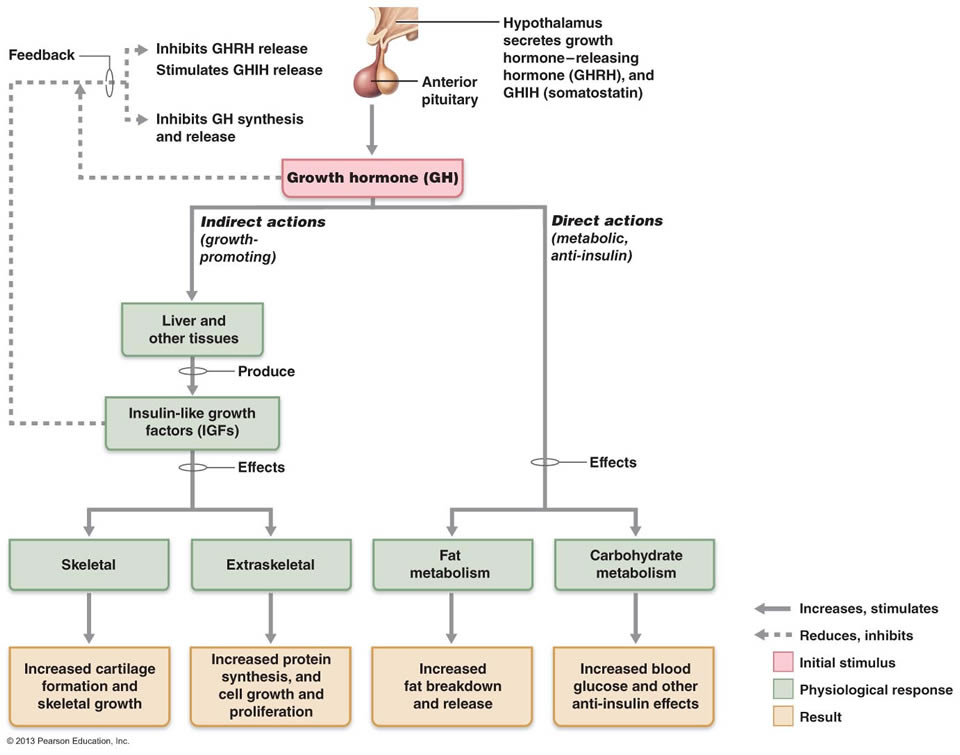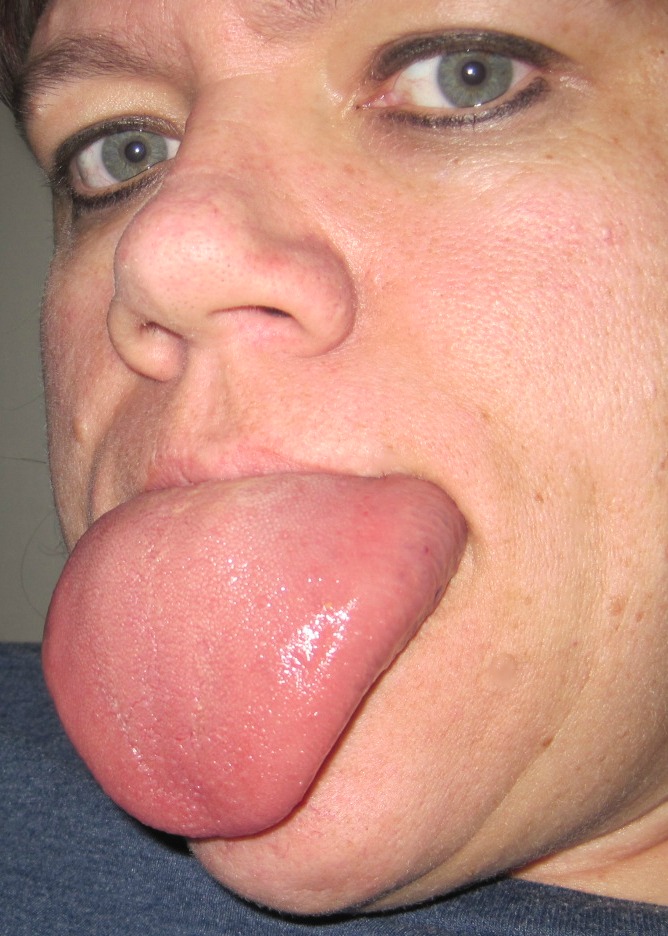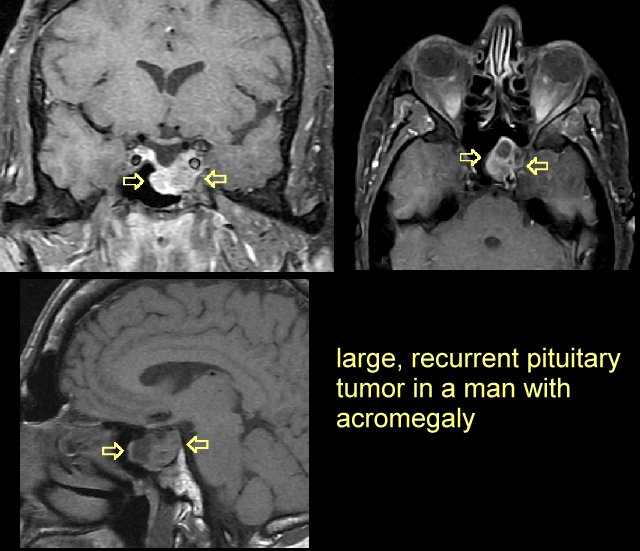Page Contents
WHAT IS IT?
Acromegaly/gigantism: both are conditions characterized excess growth hormone (GH). Acromegaly refers specifically to adults (growth plates in bones fused), and the label of gigantism is specific to children (growth plates not fused). The cause of acromegaly/gigantism is typically a pituitary adenoma that is responsible for releasing excessive levels of GH.

WHY IS IT A PROBLEM?
Increased GH in children will cause gigantism by increasing linear bone growth (epiphysis are not fused). While this growth will not occur in older patients, both children and adults will also increase their organ size in response to increased GH which leads to complications such as heart failure (common cause of death).
Secondary diabetes mellitus is often present becasue GH induces liver gluconeogenesis

WHAT MAKES US SUSPECT IT?
Risk factors: middle aged individuals
Clinical presentation for this condition is fairly dramatic and observable by inspection:
- Large overall size and continued growth
- Coarse facial features
- Large hands and feet
- Large tongue with deep furrows

HOW DO WE CONFIRM A DIAGNOSIS?
Serology: increased insulin growth factor 1 (IGF-1) will be detected as well as GH
Glucose tolearnce test: hypoglycemia is a stimulus for GH release, so giving oral glucose should lower levels of GH. If this is not the case, acromegaly/gigantism can be implicated.
MRI of pituitary: can confirm the presence of a pituitary adenoma

HOW DO WE TREAT IT?
Pituitary adenoma resection is typically the first line therapy that is used.
Somatostatin analogs (octreotide): these work to decrease levels of GH and TSH, and can be used in patients that are not able to be cured by surgery.
Pegvisomant: growth hormone receptor antagonists can also be used to treat this condition.
HOW WELL DO THE PATIENTS DO?
Surgery can be corrective and can address the release of GH, however certain physiological changes are irresistible and can crease the chances of mortality.
WAS THERE A WAY TO PREVENT IT?
This condition is not preventable, however early detection can limit irreversible physiological changes.
WHAT ELSE ARE WE WORRIED ABOUT?
Colorectal cancer: this condition increases the risk of colorectal polyps and cancer
Cardiac failure: is common (causes death especially in children)
Diabetes: can be caused by this disease from insulin resistance
OTHER HY FACTS?
Andre the giant was in the famous film “The Princess Bride”
ARCHIVE OF STANDARDIZED EXAM QUESTIONS
This archive compiles standardized exam questions that relate to this topic.
FURTHER READING
Page Updated: 01.20.2016